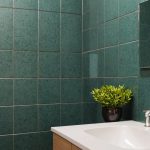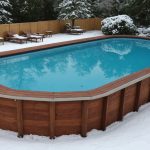Finding the right size dehumidifier for your UK basement apartment can be challenging. Too small, and humidity remains; too large, and energy bills skyrocket. This guide breaks down key factors, such as the size of your space, humidity levels, and typical UK climate conditions. With tailored insights and practical solutions, you can ensure a comfortable living environment and protect your belongings from excessive moisture. Ready to make an informed choice? Let’s get started.
Understanding Humidity and Its Impact on Basement Apartments
Humidity levels play a crucial role in determining the comfort and health of living spaces, especially in basement apartments. Basement moisture can lead to various dampness issues, which are common in the UK due to the prevalent wet climate. High humidity levels can result in condensation, mould growth, and unpleasant odours, making the environment uncomfortable and potentially harmful.
In basement apartments, humidity levels often exceed the recommended range, leading to dampness issues. This can damage property and affect the structural integrity of the building. It is essential to monitor and control these levels to maintain a healthy living environment. Excessive moisture can aggravate respiratory conditions and allergies, posing significant health risks to residents.
Addressing humidity is not only about comfort but also about health and safety. Proper ventilation, dehumidifiers, and moisture barriers are effective solutions to mitigate these problems. By managing humidity levels, you can prevent the onset of mould and mildew, ensuring a safer and more comfortable living space. Regular checks and maintenance can help identify potential issues early, allowing for timely interventions. Understanding and controlling humidity is crucial for those residing in basement apartments to ensure their well-being and protect their homes from moisture-related damage.
Factors to Consider When Sizing a Dehumidifier
Selecting the right dehumidifier size is crucial for effectively managing basement humidity. Start by measuring the area of your basement apartment. Calculate the square footage to determine the capacity needed for your space. Larger areas require dehumidifiers with higher capacities to efficiently remove excess moisture.
Next, assess the current humidity levels and identify their sources. Use a hygrometer to measure the relative humidity. If levels consistently exceed 60%, a dehumidifier is necessary. Consider factors like poor ventilation, water leaks, or external moisture sources that contribute to high humidity.
Climate considerations are particularly important in the UK, where wet weather is common. The damp climate can exacerbate moisture issues in basements. Choose a dehumidifier designed for high humidity environments to ensure optimal performance.
When selecting a dehumidifier, take into account the unique characteristics of your basement. Consider the presence of any dampness issues and how they might affect the efficiency of your dehumidifier. By carefully evaluating these factors, you can select a dehumidifier that effectively reduces humidity, protecting your health and property.
Calculating the Required Dehumidifier Capacity
Determining the appropriate dehumidifier capacity for your UK basement involves precise calculations. This ensures effective moisture control and a healthier living space.
Formula for Calculating Capacity
To calculate the required dehumidifier capacity, use the formula:
[ text{Capacity (PPD)} = text{Area (sq ft)} times text{Humidity Factor} ]
The humidity factor varies based on the dampness level. For moderately damp spaces, use a factor of 0.5, while for very damp areas, use 0.75.
Understanding Pints Per Day (PPD)
Pints per day (PPD) measures the amount of moisture a dehumidifier can remove daily. A higher PPD indicates greater capacity, essential for larger or more humid basements. In the UK, where humidity can be high, selecting a dehumidifier with adequate PPD is crucial for maintaining optimal conditions.
Example Calculations for Different Basement Sizes
Consider a 500 sq ft basement with moderate dampness. The calculation is:
[ text{Capacity (PPD)} = 500 times 0.5 = 250 text{ PPD} ]
For a 700 sq ft basement with high dampness:
[ text{Capacity (PPD)} = 700 times 0.75 = 525 text{ PPD} ]
These calculations guide you in choosing a dehumidifier that effectively manages moisture, enhancing comfort and safety.
Comparison of Dehumidifier Types
Choosing the right dehumidifier type is essential for managing humidity in UK basements. Two main types are refrigerant and desiccant dehumidifiers, each with distinct features and benefits.
Refrigerant vs. Desiccant Dehumidifiers
Refrigerant dehumidifiers work by cooling air to condense moisture, making them effective in warm, humid conditions. They are energy-efficient and ideal for larger spaces. However, their performance decreases in cooler temperatures, which can be a consideration for UK basements.
Desiccant dehumidifiers use a moisture-absorbing material, making them effective in both warm and cold conditions. They are quieter and lighter, but tend to consume more energy. Their ability to operate efficiently in lower temperatures makes them suitable for UK basements, particularly during cooler months.
Pros and Cons
-
Refrigerant Dehumidifiers:
-
Pros: Energy-efficient, effective in warm climates.
-
Cons: Less effective in cold temperatures, larger size.
-
Desiccant Dehumidifiers:
-
Pros: Effective in cold climates, quieter operation.
-
Cons: Higher energy consumption, smaller capacity.
Recommended Brands and Models
For UK basements, consider brands like Meaco and EcoAir. Models such as the Meaco 20L Low Energy and EcoAir DD1 Simple are popular choices. These models offer reliable performance tailored to different humidity challenges, ensuring a comfortable and healthy living space.
Tips for Effective Dehumidifier Use
Maximising the efficiency of your dehumidifier requires strategic placement and operation. Position the unit in a central location, away from walls and furniture, to allow optimal air circulation. This enhances its ability to draw in moist air and expel dry air effectively.
Best Practices for Placement and Operation
- Central Location: Place your dehumidifier centrally for better air circulation.
- Clear Surroundings: Ensure there are no obstructions around the unit.
- Regular Maintenance: Clean filters regularly to maintain efficiency.
Continuous Drainage vs. Manual Emptying
Continuous drainage is a convenient feature for extended operation without interruption. It involves connecting a hose to the dehumidifier, allowing water to drain directly into a sink or floor drain. This is particularly beneficial in high humidity areas, reducing the need for frequent manual emptying. However, manual emptying is still a viable option if continuous drainage isn't feasible, but it requires regular attention to prevent overflow.
Seasonal Considerations
In the UK, consider adjusting the dehumidifier settings according to the season. During colder months, desiccant dehumidifiers are more effective due to their ability to operate efficiently in lower temperatures. In contrast, refrigerant models perform better in warmer seasons, providing energy-efficient moisture removal.
Troubleshooting Common Dehumidifier Issues
Even the most reliable dehumidifiers can encounter problems. Identifying and resolving these issues ensures your device operates efficiently, maintaining a healthy environment.
Identifying Common Performance Issues
Common problems include the dehumidifier not collecting water, strange noises, or the unit not turning on. Often, these issues stem from blocked filters, incorrect settings, or power supply problems. A dehumidifier may also struggle if its capacity is too low for the space.
Steps to Resolve Operational Problems
- Not Collecting Water: Ensure the humidity setting is lower than the current room humidity. Check for blocked filters or air intakes and clean them regularly.
- Strange Noises: Inspect for loose parts or debris in the fan. Tighten screws and clear any obstructions.
- Not Turning On: Verify the power source and ensure the plug is secure. Examine the power cord for damage.
Routine Maintenance Tips for Optimal Performance
Maintain your dehumidifier by cleaning the filter every two weeks. Ensure the water reservoir is emptied and cleaned to prevent mould growth. Regularly check for any signs of wear and tear, addressing them promptly to avoid larger issues. Proper maintenance extends the life of your dehumidifier and ensures it functions effectively.
FAQs About Dehumidifiers in UK Basements
When selecting a dehumidifier for a UK basement, common queries often arise. Addressing these dehumidifier FAQs can help alleviate user concerns and guide informed decisions.
What Size Dehumidifier Do I Need?
The size of the dehumidifier depends on your basement's area and dampness level. For a precise calculation, multiply the square footage by a humidity factor (0.5 for moderate dampness, 0.75 for high dampness). This will determine the capacity in pints per day (PPD) required to effectively manage moisture.
Are Dehumidifiers Energy-Efficient?
Energy consumption is a common concern. Refrigerant dehumidifiers are generally more energy-efficient in warmer conditions, while desiccant models may consume more energy but are effective in cooler climates. Look for models with energy-saving features to minimise costs.
How Noisy Are Dehumidifiers?
Noise levels vary by model. Desiccant dehumidifiers tend to operate quieter than refrigerant types. If noise is a concern, consider units specifically designed for low-noise operation.
When Should I Seek Professional Advice?
If persistent humidity issues or complex installation challenges arise, seeking professional advice is advisable. Experts can provide tailored solutions, ensuring optimal dehumidifier performance and a healthier living environment.
















